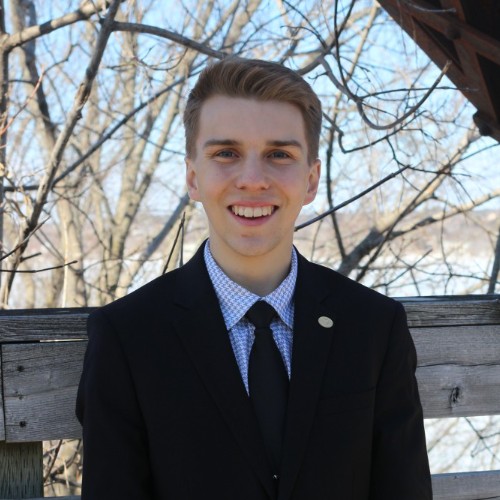Summer Internship at the Institute of Biomedical Engineering: A Computational Model for Stroke Rehabilitation
Author: Alexandre Banks
Posted on Sep 17, 2020
Category: Student Spotlight

As a third-year Electrical and Computer Engineering student at the University of New Brunswick, I feel fortunate to have had the opportunity to complete a 16-week co-op at the Institute of Biomedical Engineering (IBME). In this position, I worked under principal investigator Dr. Jon Sensinger and lead a project that coupled Model Predictive Control (MPC) with stroke rehabilitation to determine optimal treatments for individuals throughout the continuum of care. I enjoyed the technical aspects of my job; however, the highlight of my internship was meeting the wonderful staff and students at the IBME and working in the welcoming and diverse atmosphere of the institute.
The goal of the project was to design a Nonlinear Model Predictive Controller (NMPC) that could be coupled with a mathematic state-space model of stroke recovery to determine optimal treatments for patients throughout the stages of recovery (acute, inpatient, outpatient). The project was intended to demonstrate two important aspects of NMPC and their significance in a healthcare setting: first, human recovery can be accurately recreated through a dynamic model; second, an automated controller can support professionals in determining optimal treatments for individualized stroke rehabilitation.
Ultimately, there were two overarching elements of the project: developing a model of stroke recovery, and applying this model to NMPC.
First, through conducting a literature review and consulting with researchers and healthcare professionals at various institutes (i.e. UNB, Stan Cassidy, Memorial University) we developed a state-space model of stroke rehabilitation. For simplicity, this model was first realized in a concept map of stroke rehabilitation that related various treatment techniques (i.e. range of motion exercises, functional electrical stimulation, and virtual reality) and model factors (age, comorbidities, premorbid fitness), to measurable quantities, or states, of recovery (i.e. arm spasticity, lower-limb gate, and shoulder pain). This concept model, based on literature evidence, was then transformed into a mathematical model relating treatments, states, and model factors.
Following this, we developed a MATLAB program that implemented a variant of Nonlinear Model Predictive Control: the Dual Multi-Stage NMPC. This controller, introduced by S. Thangavel in 2018, is powerful in that it learns the parameters of the system – in our case various factors of the human – while determining optimal inputs.
At the end of the term, we combined Dual Multi-Stage NMPC to a model of arm spasticity recovery and the MATLAB simulation suggested a sequence of treatments to be delivered to the virtual patient. The simulation was run in such a way to show the “actual” human and the model human, with the algorithm quickly learning the “actual” human model and applying the optimal treatments.
Learning about MPC and NMPC sparked my interested in a field of engineering I had little familiarity with: control engineering. This internship provided me with the opportunity to develop a background in controls, but left me with many questions and a desire to learn more.
I found the project I worked on exciting and meaningful; yet, to me, the most important aspect of the work term was networking with researchers across Atlantic Canada, and meeting the wonderful staff and students at the IBME. Many people at the IBME, specifically my supervisor, helped me gain a better understanding of how to conduct research. They taught me how to effectively frame scientific questions, efficiently learn background content, conduct literature reviews, run simulations and write journal papers. More importantly, they emphasized the importance of collaboration in a project and tackling challenges with a multidisciplinary approach.
The IBME is an incredible spot to work and has had a positive impact on my life and career path. I am honoured to have been involved in the cutting-edge research they conduct and to have helped contribute to the Canadian health and engineering sectors.
I am looking forward to submitting a paper on my research this summer to IEEE for publication, and am excited to stay involved with the IBME in the fall. I want to thank the Natural Sciences and Engineering Research Council of Canada (NSERC), the New Brunswick Health Research Foundation (NBHRF), UNB, the IBME, and Dr. Jon Sensinger for providing me with this opportunity.
